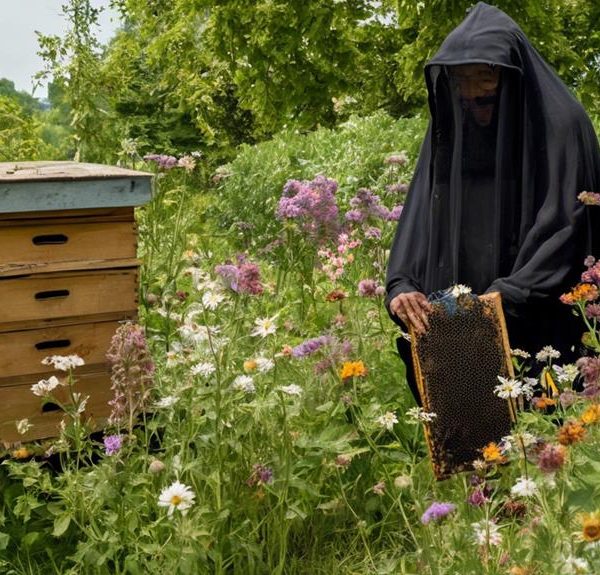Peek into the pivotal role of entrance hole size in beekeeping, determining hive health and protection against predators.
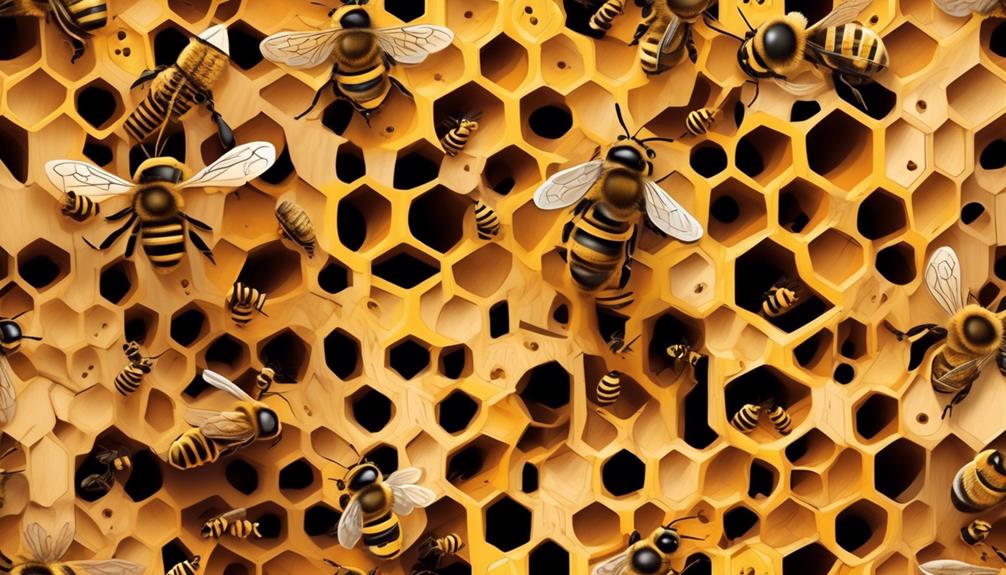
What Size Hole for Bees?
You know what they say, 'The devil is in the details', and when it comes to beekeeping, this adage couldn't be truer. It's not just about providing a home for your buzzing friends; the size of the entrance hole can greatly impact the health of the colony.
You might be surprised to learn how varying diameters can affect different species of bees, influence hive temperature, and even play a role in predator protection. As you navigate the intricacies of this craft, we'll guide you in determining the ideal hole size for your particular hive.
We bet you're wondering now, how does something as small as a hole size contribute to a thriving bee colony? Let's explore.
Key Takeaways
- Different bee species have specific nesting requirements, including preferred hole sizes and depths.
- Holes that are too small can reduce the colony's food supply, while holes that are too large can invite predators and parasites.
- Proper hole size is crucial for brood rearing, larval development, hive temperature, and ventilation.
- Modifying beehole sizes requires careful consideration of bee species, hive design, and climate.
Understanding Different Bee Species
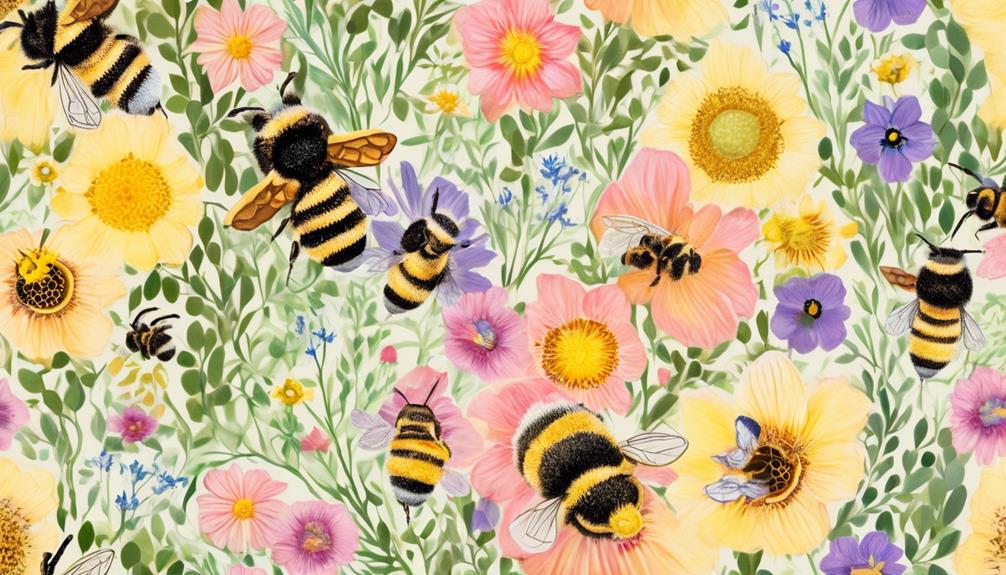
While it's essential to know about hole sizes for bees, it's equally crucial to understand the diversity among different bee species, as these variations significantly influence their habitat preferences and behaviors. You must appreciate the wide range of species, from the honey bees you're likely familiar with to the lesser-known mason bees. Each species presents unique characteristics that shape their nesting habits.
Honey bees, for instance, are social insects that live in large colonies, usually within hollow trees or man-made hives. They're not particular about the size of the entrance hole, as long as it's defensible.
On the other hand, mason bees are solitary creatures, preferring small cavities for their nests. They typically seek out holes with diameters ranging from 3/16 to 5/16 of an inch, often in dead wood or hollow stems.
Understanding the characteristics of these species not only influences the design of your bee-friendly spaces but also informs your approach to their conservation. Remember, knowledge of these species equips you to better support them and, in turn, sustain the vital pollination services they provide.
Ideal Hole Sizes for Bees
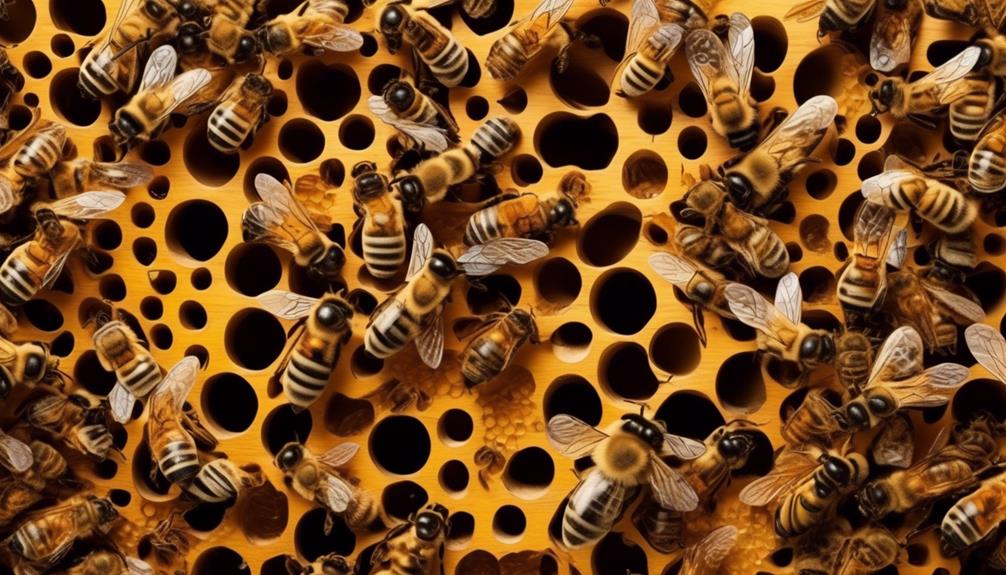
When creating a habitat for bees, it's important to consider the ideal hole sizes for different species, as this can significantly impact their ability to nest and thrive.
Different bee species have specific nesting requirements. For instance, the solitary Mason bees prefer holes with diameters between 5/16 and 3/8 inches, while Leafcutter bees typically need slightly larger holes, around 1/4 to 3/8 inches in diameter.
The depth of the hole also matters. A depth of 3 to 6 inches is typically ideal for most species. However, deeper holes can accommodate more brood cells, enhancing the colony's reproductive potential.
Remember to ensure the holes are smooth and free from splinters, as rough interiors can damage the delicate wings of bees or deter them from using the nest.
Lastly, the orientation of the hole also matters. Ideally, the holes should face towards the sun, as bees are attracted to warmth and sunlight. However, avoid direct exposure to harsh weather conditions.
Impact of Hole Size on Colony Health
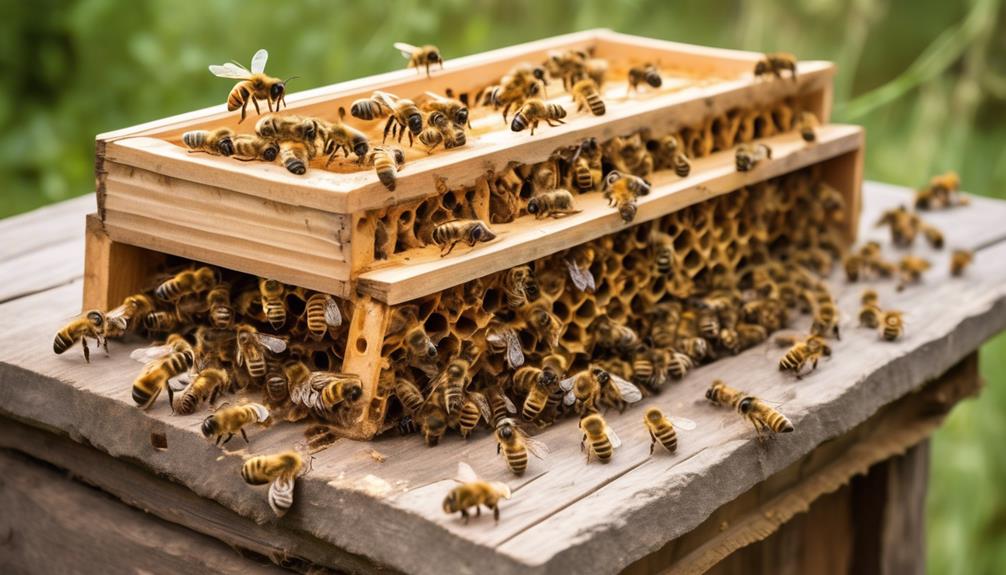
Understanding the role of the hole size in bee habitats isn't just about construction preferences; it directly affects the health and vitality of the entire colony. If you're thinking that any hole will do, you're mistaken. The size of the hole matters significantly.
When holes are too small, worker bees can't efficiently transport pollen and nectar. This reduces the colony's food supply, impacting their energy levels and overall health. If holes are too large, they invite predators and parasites, posing a serious threat to the colony's survival.
Moreover, temperature regulation, a crucial factor for bee health, is affected by hole size. Larger holes can cause drafts, reducing the hive's internal temperature. This isn't ideal for brood rearing, as larvae require consistent warmth for proper development. On the other hand, smaller holes can lead to inadequate ventilation, increasing humidity and promoting the growth of harmful fungi.
Modifying Beehole Sizes
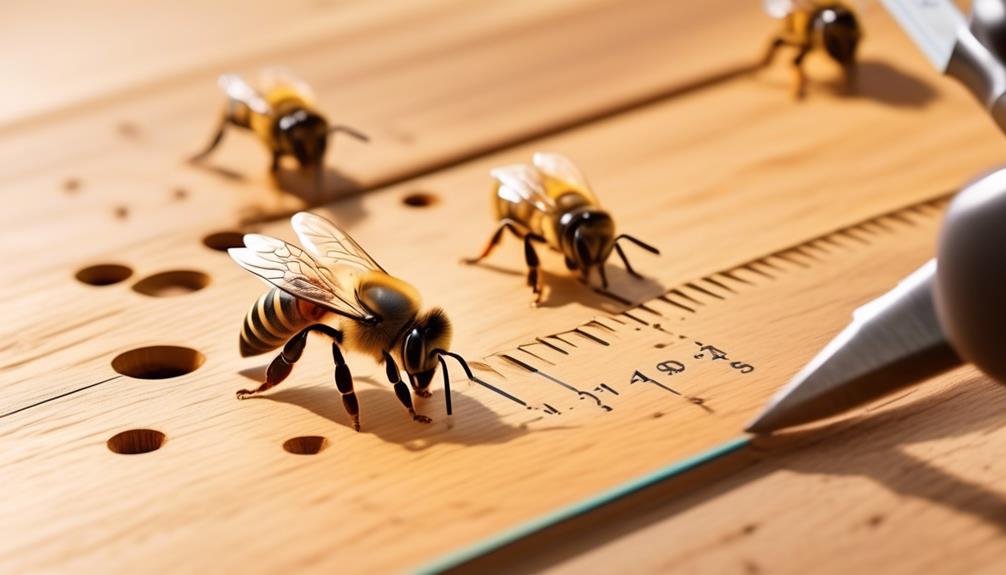
You may find it necessary to adjust the size of beeholes in your hives, a process that requires careful planning and precise execution to maintain the colony's health and productivity. Modifying beehole sizes isn't a task you should undertake lightly.
You'll need to consider various factors, including the bee species, hive design, and climate. For instance, smaller holes are preferable for solitary bees, as they offer protection from predators. However, social bees, like honeybees, may require larger entrances for efficient traffic flow.
The hive design also influences the hole size. Top bar hives, for example, generally have larger holes than traditional Langstroth hives. You'll want to adjust the holes accordingly to ensure they fit your specific hive type.
Lastly, take into account the local climate. In colder areas, smaller holes help maintain internal hive temperature, but in warmer climates, larger holes promote ventilation.
When you're ready to modify, use a drill with the appropriate bit size. Make sure the hive is inactive to minimize disturbance. And remember, this process takes time and patience. You don't want to stress your bees or risk damaging the hive structure.
Best Practices for Beekeeping
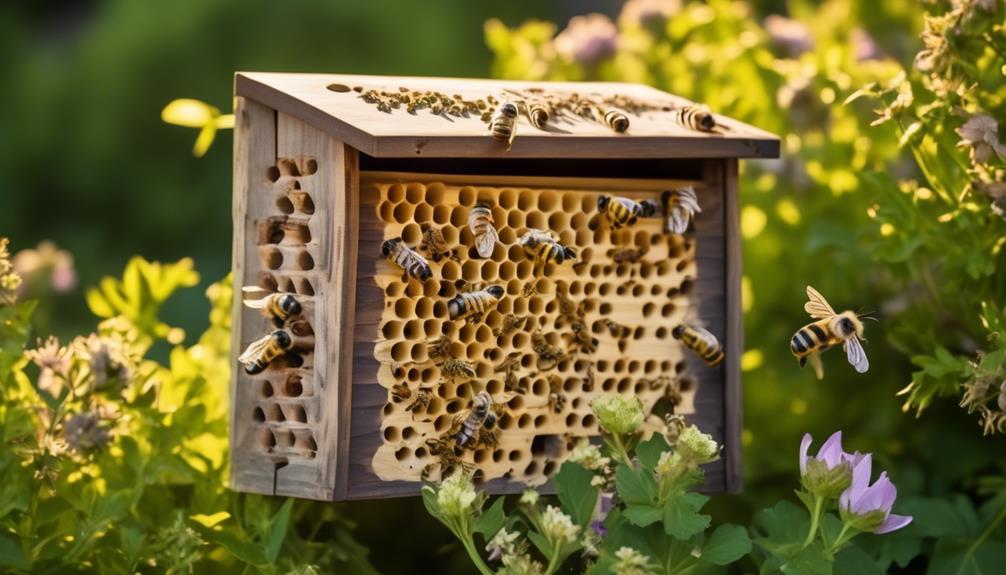
Having meticulously adjusted your beehole sizes, it's critical to ensure that the rest of your beekeeping practices are just as precise and tailored to your bees' needs. Your attention should next turn to the hive's location.
It's essential that you place the hive in a spot that's sheltered from wind but gets morning sun. This will encourage your bees to start foraging early.
You also need to consider the hive's proximity to food sources. Placing it within a radius of 3-4 miles from nectar and pollen sources will help your bees to forage more efficiently. Remember, bees need water too. So, make sure there's a reliable source nearby, but not so close that it creates a damp environment within the hive.
Regular hive inspections are crucial. You should check for signs of disease or pests every 7-10 days during the active season. Be aware of the brood pattern and monitor the queen's performance. If you notice irregularities, you may need to replace your queen.
Frequently Asked Questions
What Are the Dangers of Drilling Incorrect Hole Sizes for Bees?
Drilling incorrect hole sizes can pose serious risks. If they're too small, bees can't enter or exit, disrupting their ability to forage and contribute to the hive. If too large, it could invite predators or allow in weather elements.
It's vital you're precise with your measurements to ensure the bees' survival and productivity. Proper hole sizing is crucial for maintaining a healthy and thriving bee population.
How Does the Climate Affect the Required Size of Bee Holes?
Climate greatly influences the required size of holes for bees. In warmer climates, you'd want larger holes as they provide better ventilation. But in colder climates, smaller holes are beneficial to keep the hive warmer and protect the bees from harsh weather.
It's key to balance the size for bees' easy access, ventilation, and protection. So, adjust the hole size according to your local climate conditions to ensure a thriving and healthy bee colony.
Can the Size of the Hole Influence the Species of Bees That Will Inhabit It?
Absolutely, the size of the hole can indeed influence the species of bees that'll inhabit it. Different species have different size requirements. Larger bees need bigger holes, while smaller species prefer smaller ones.
If you're trying to attract a specific species, you'll need to adjust the hole size accordingly. However, remember that other factors like location, food sources, and climate also play significant roles in attracting certain bee species.
What Tools Are Required for Modifying Bee Hole Sizes?
To modify hole sizes, you'll need a few essential tools. Start with a drill and a variety of drill bits for different hole sizes.
You'll also need a measuring tape to ensure accuracy. Safety gear such as gloves and safety glasses are crucial.
Lastly, a piece of sandpaper can help smooth rough edges. Remember, it's not just about the tool, but also using it correctly and safely.
Are There Legal Restrictions on Beekeeping and Modifying Bee Hole Sizes in Certain Areas?
Yes, there can be legal restrictions on beekeeping in certain areas. It's crucial that you check with local and state regulations before starting your beekeeping journey. Some places require permits, others have specific restrictions on hive locations, and some may even regulate the modification of bee hole sizes.
Conclusion
Understanding the sizes of bee holes is crucial in beekeeping. Each species requires a different size for optimal health. Altering these sizes can significantly impact a colony's well-being.
It's essential to adjust bee hole sizes wisely and follow best beekeeping practices. Remember, maintaining the right hole size contributes to a healthier, happier, and more productive bee colony.
Your understanding and effort can make a significant difference in the world of these incredible pollinators.

